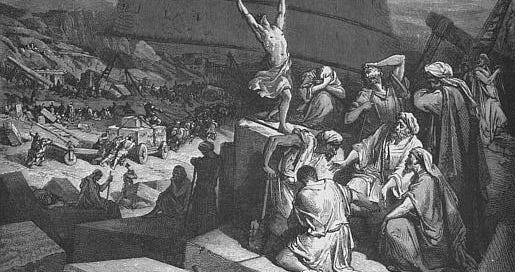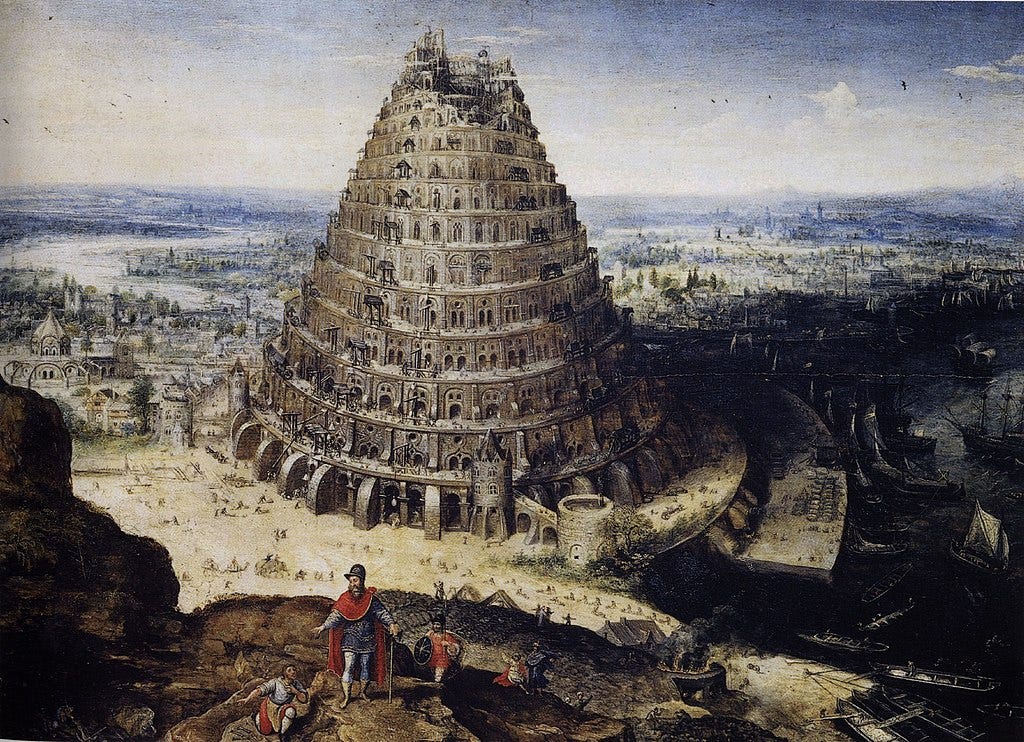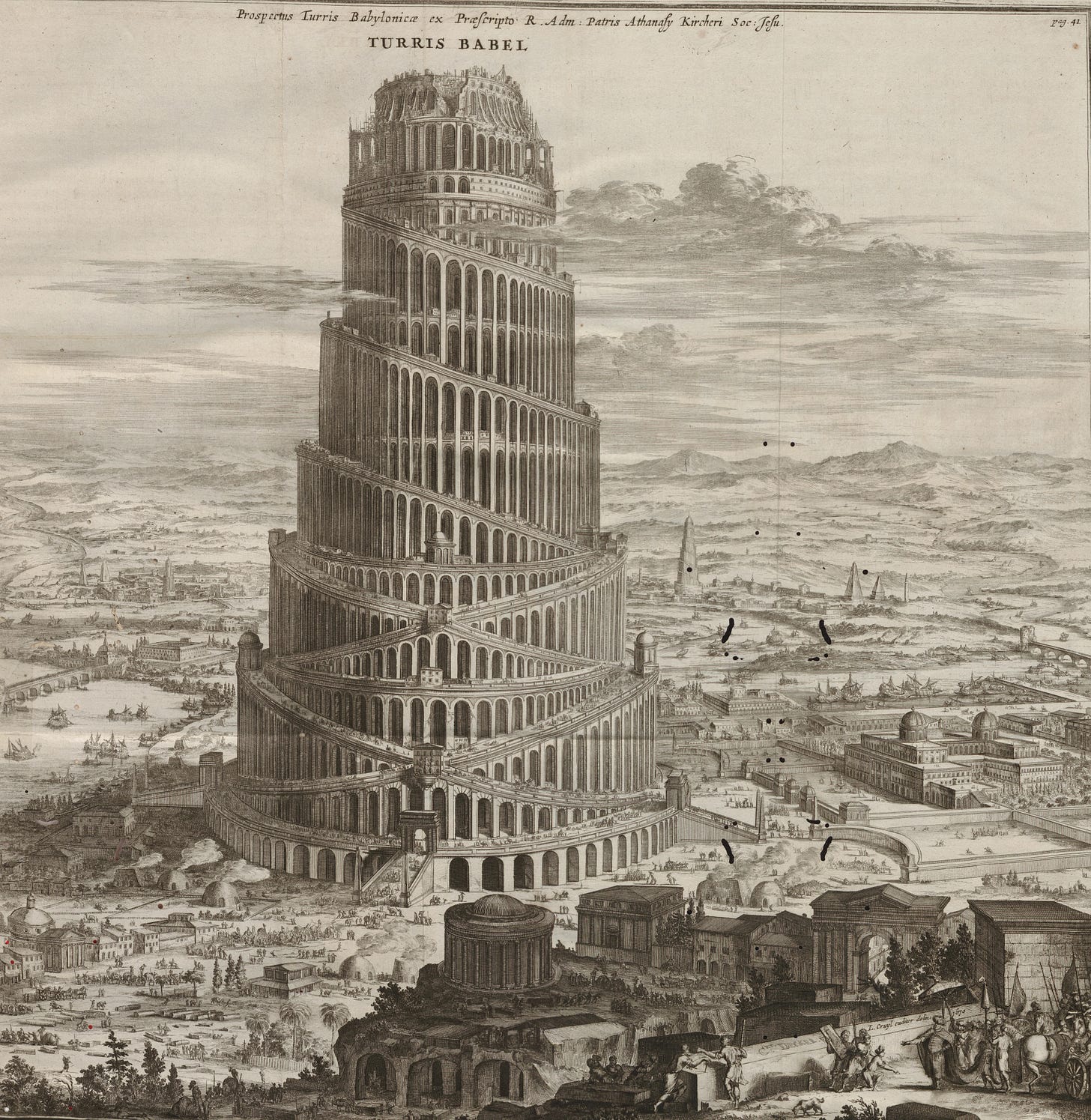Like a digital Tower of Babel, social media stands tall, reshaping our world, but not without challenges. In this hyperconnected age, we build platforms that promise unity, yet often breed confusion, misunderstanding, and division. The biblical tower led to a cacophony of languages and thwarted cooperation and social media promises a modern echo of this age-old tale. As we become more and more digital, we must remember that social media’s allure can leave us lost in translation and disconnected from our shared reality
Tour de Babel. Lucas van Valckenborch, 1594. The Louvre/Wikimedia.
In his hubris, Noah’s great-grandson Nimrod, envisioned a tower “that reaches to the heavens, so that [people could] make a name for themselves…” and would bring a sense of unified community to the world. Just as the tower’s construction captured its builders’ imagination and ambition, social media platforms have captivated modern society with instantaneous connections, self-expression, and a sense of belonging. The digital agora, however, that boasts diverse global voices, resembles the Tower of Babel in more ways than one. Social media platforms are undeniably appealing—at a tap, we can share thoughts, images, and experiences that foster continent and culture spanning connections. The modern “tower” draws people in with its enchanting promise of uniting humans in a shared digital space.
But like the inhabitants of the ancient tower, who aimed for heaven but fell short, social media’s users find themselves navigating unforeseen obstacles. There is an evident drive for communication and connection, yet digital connectivity has consequences that mirror the Tower of Babel story in surprising ways.
The ancient tower was a monument to human ambition; social media platforms have become digital monuments to the connection, influence, and expression human beings so desire. But these platforms inevitably foster fragmented communication that lacks nuance, and bears striking resemblance to the language confusion that befell the Tower’s ancient builders.
Turris Babel, Althanasius Kircher, 1679. Heidelberg University.
The sudden emergence of many languages among the builders resulted in a breakdown of effective communication. Social media’s emphasis on brevity, instant gratification, and visual content can similarly lead to communication that is concise but lacking in depth. Messages condensed into bite-sized portions often miss nuance and complexity. The Tower of Babel’s inhabitants found themselves unable to understand one another, thus rendering their enterprise impossible. Effective collaboration requires mutual comprehension. A social media dominated, digital landscape enables individuals from different backgrounds, cultures, and perspectives to interact daily, but these platforms’ constraints inadvertently contribute to miscommunication, misinterpretation, and the perpetuation of stereotypes.
The “Great” Tower of Babel, Pieter Bruegel the Elder, 1563. Kunsthistorisches Museum/Wikimedia.
Our fragmented communication is exacerbated by how rapidly information spreads on social media. Rumors, misinformation and half-truths quickly go viral, leading to distorted public perceptions of events and issues. Silicon Valley Bank’s recent spectacular collapse, for example, was likely preventable had investors not been spooked by social-media-driven rumors and panic.
The Tower of Babel illustrates that cooperation and unity aren’t easy to achieve; similarly social media faces communication limitations that hinder the development of a shared understanding and common ground. The metaphorical language divide on these platforms echoes the struggles faced by the ancient builders, reminding us that while the allure of social media is strong, its impact on communication can be devastating. The common language that had united the Tower of Babel’s people disintegrated, leading to separation into distinct groups, each with their own perspective and understanding of the world. Social media’s algorithm-driven echo chambers and filter bubbles can similarly isolate individuals into their own information silos, reinforcing preexisting beliefs and limiting exposure to diverse viewpoints.
The Confusion of Tongues, Gustave Doré, 1860s. Private collection/Wikimedia
Misinformation and fake news spread indiscriminately on social media, further contributing to the erosion of a shared reality. Modern society grapples with a fractured information landscape where conflicting narratives thrive. Credible sources are difficult to distinguish from misleading ones and this hinders collective understandings of events and issues from forming, leading to isolation and disunity. Social media’s narratives often foster divisions and promote polarized views, while discouraging open dialogue. The virtual walls algorithm-driven content delivery builds mirror the communication walls that separated the ancient builders.Virtual interactions increasingly define our world. But if we acknowledge the dangers of information isolation, and actively seek diverse perspectives, modern societies can work towards restoring a sense of unity and common sense.
Social media platforms are not a lost cause. Fostering open dialogue and genuine connections remain key to bridging the gaps digital platforms create in communication and shared reality. Cultivating critical thinking and media literacy skills will be essential in navigating this landscape.
The Ruinous Tower of Babel, David Humbert de Superville, 1770-1849. Leiden University.
We should embrace diversity of thought, perspective, and culture, because through it we can develop a modern antidote to the disintegration witnessed at the Tower of Babel. When we seek viewpoint diversity and engage in respectful discourse, we liberate ourselves from social media’s artificial communication walls. Communication failures divided Babel’s people; we can unite our digital world through empathy, compassion, and willingness to understand one another.









